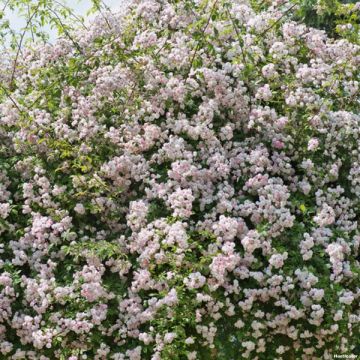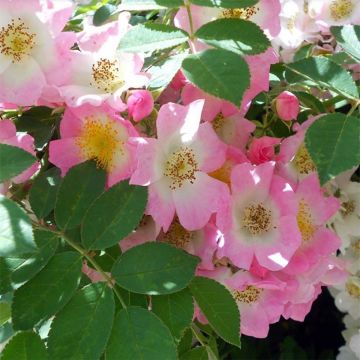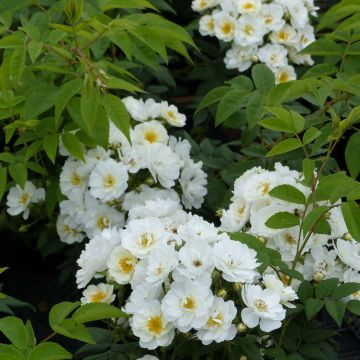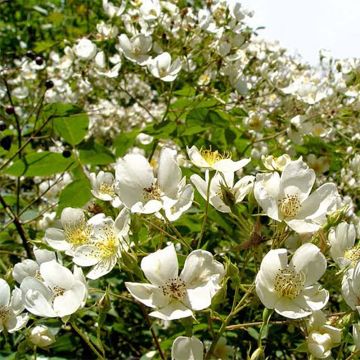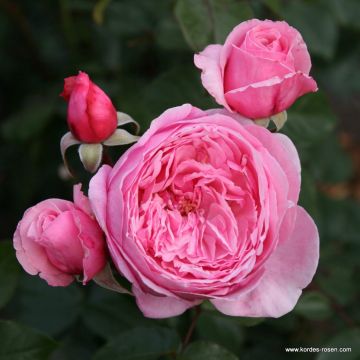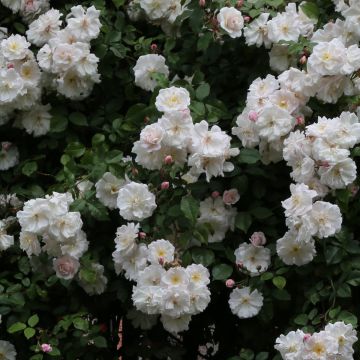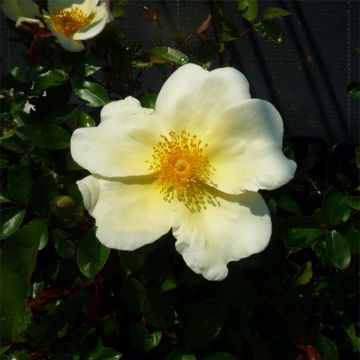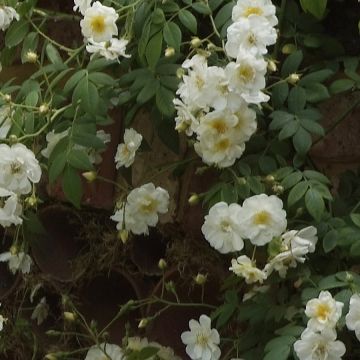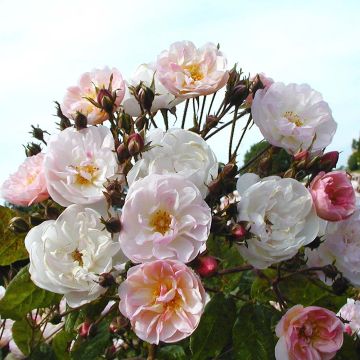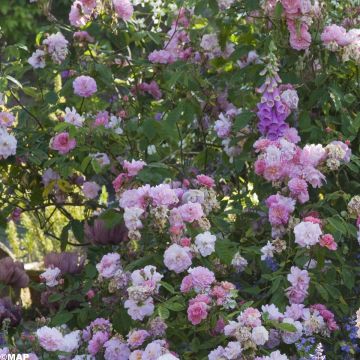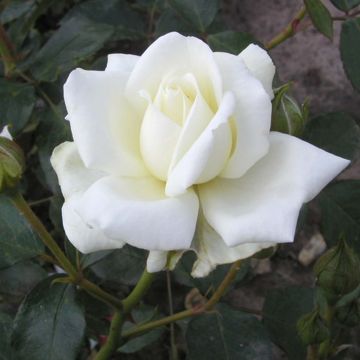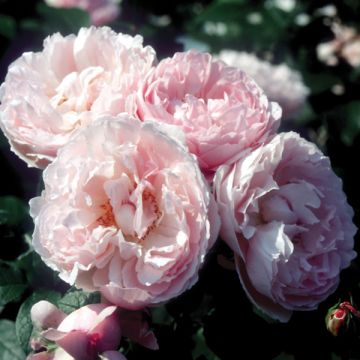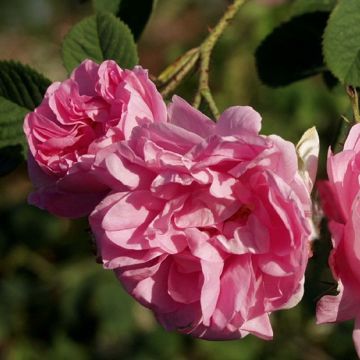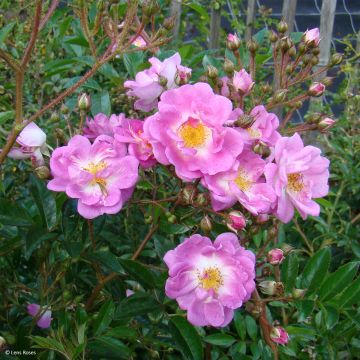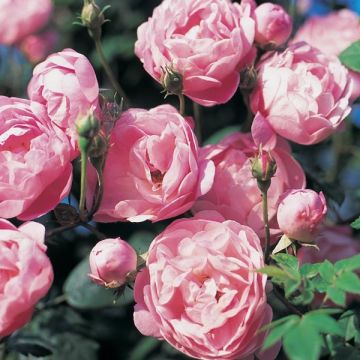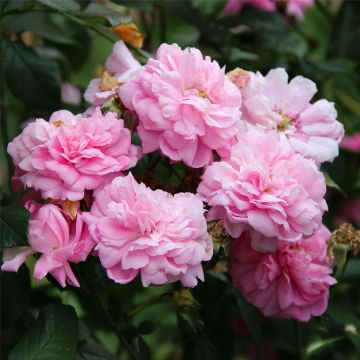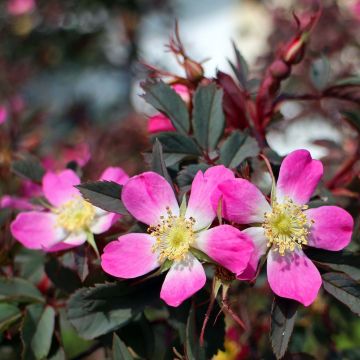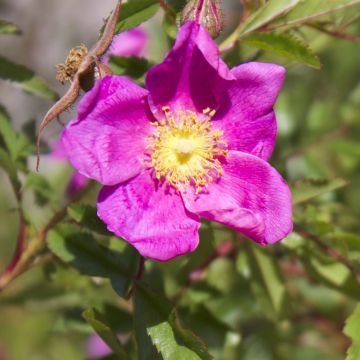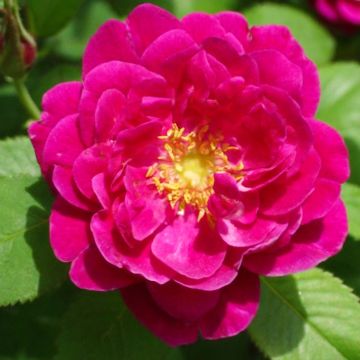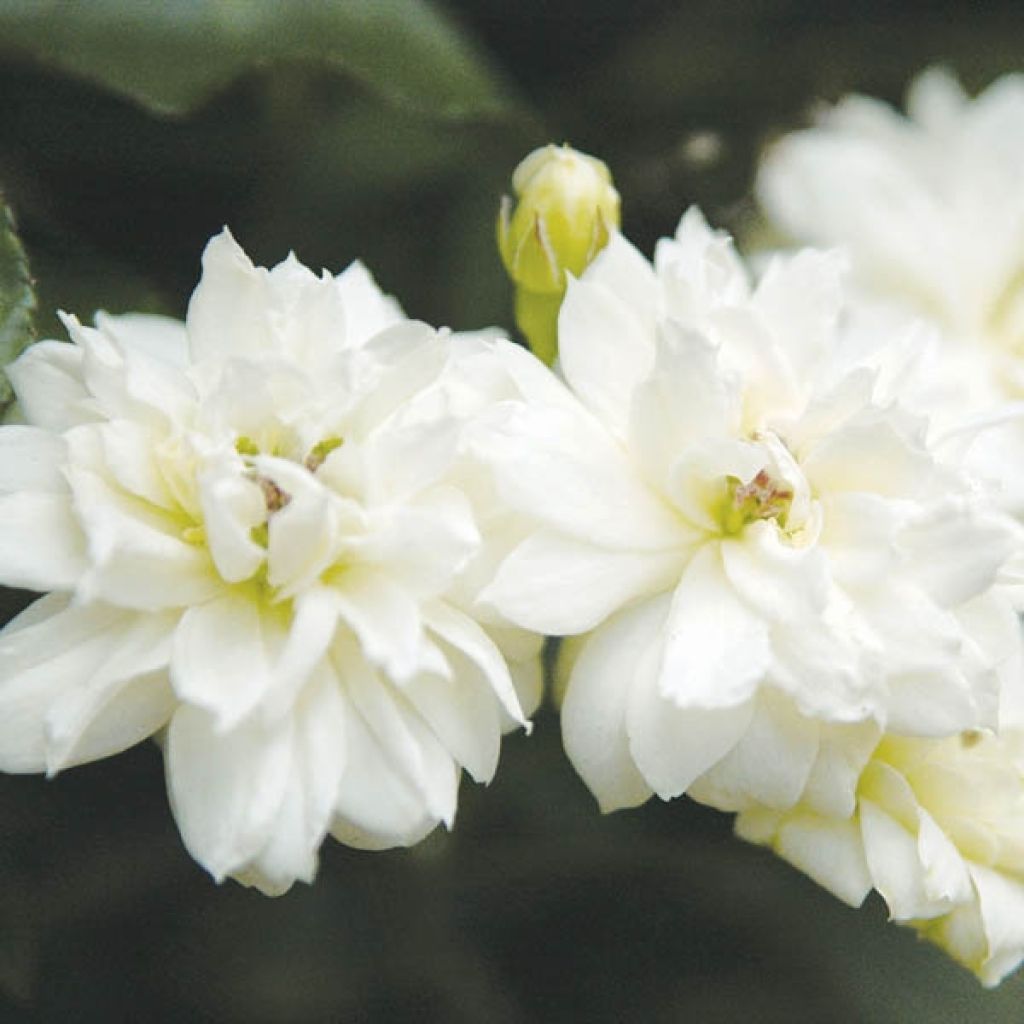

Rosa banksiae var. banksiae 'Alba Plena' - Hybrid Banksia - Rambling Rose
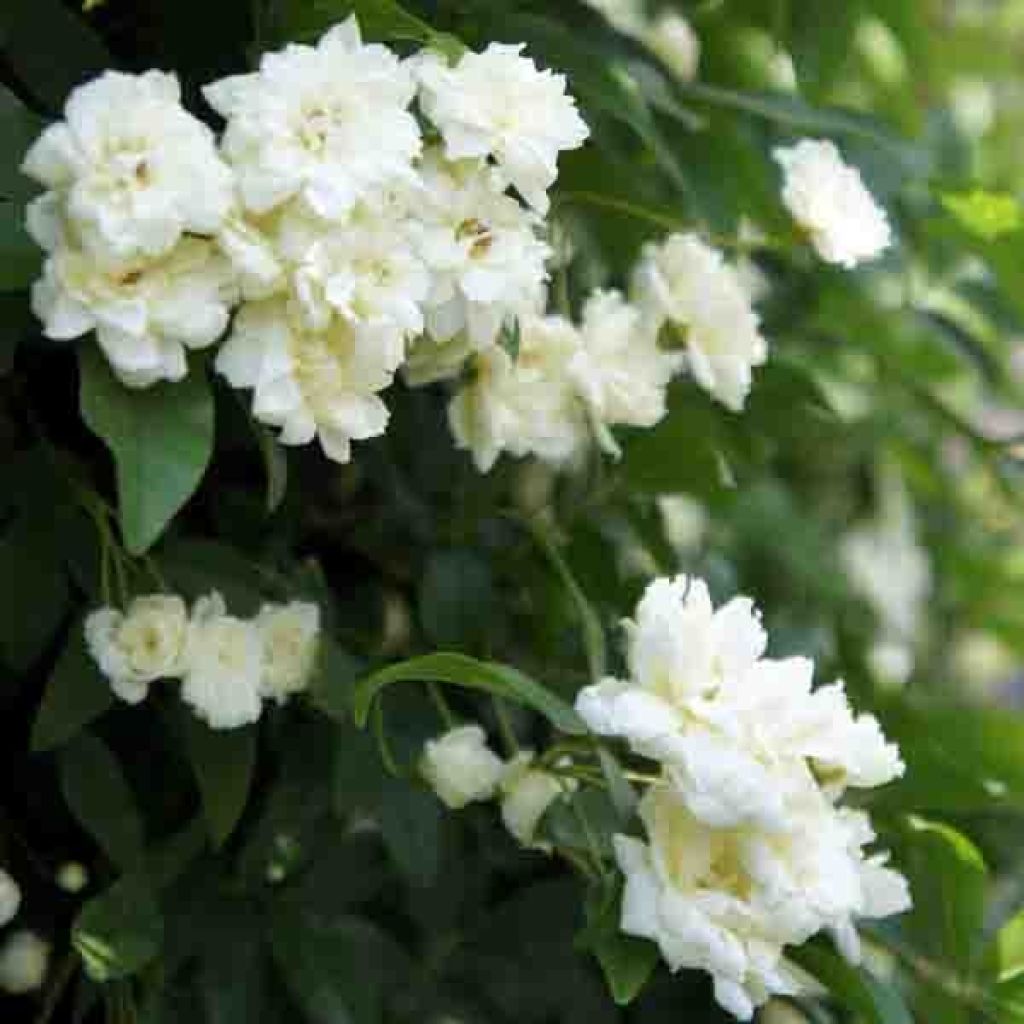

Rosa banksiae var. banksiae 'Alba Plena' - Hybrid Banksia - Rambling Rose
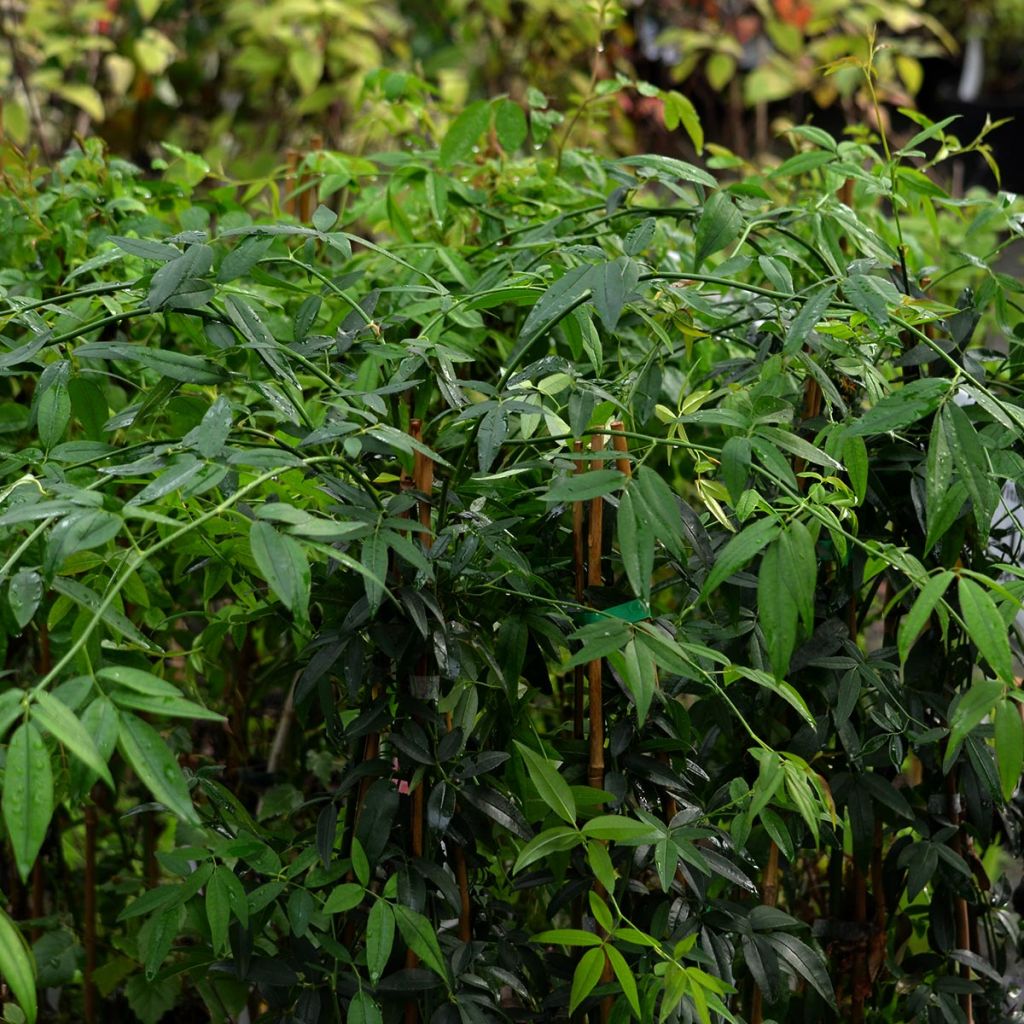

Rosa banksiae var. banksiae 'Alba Plena' - Hybrid Banksia - Rambling Rose
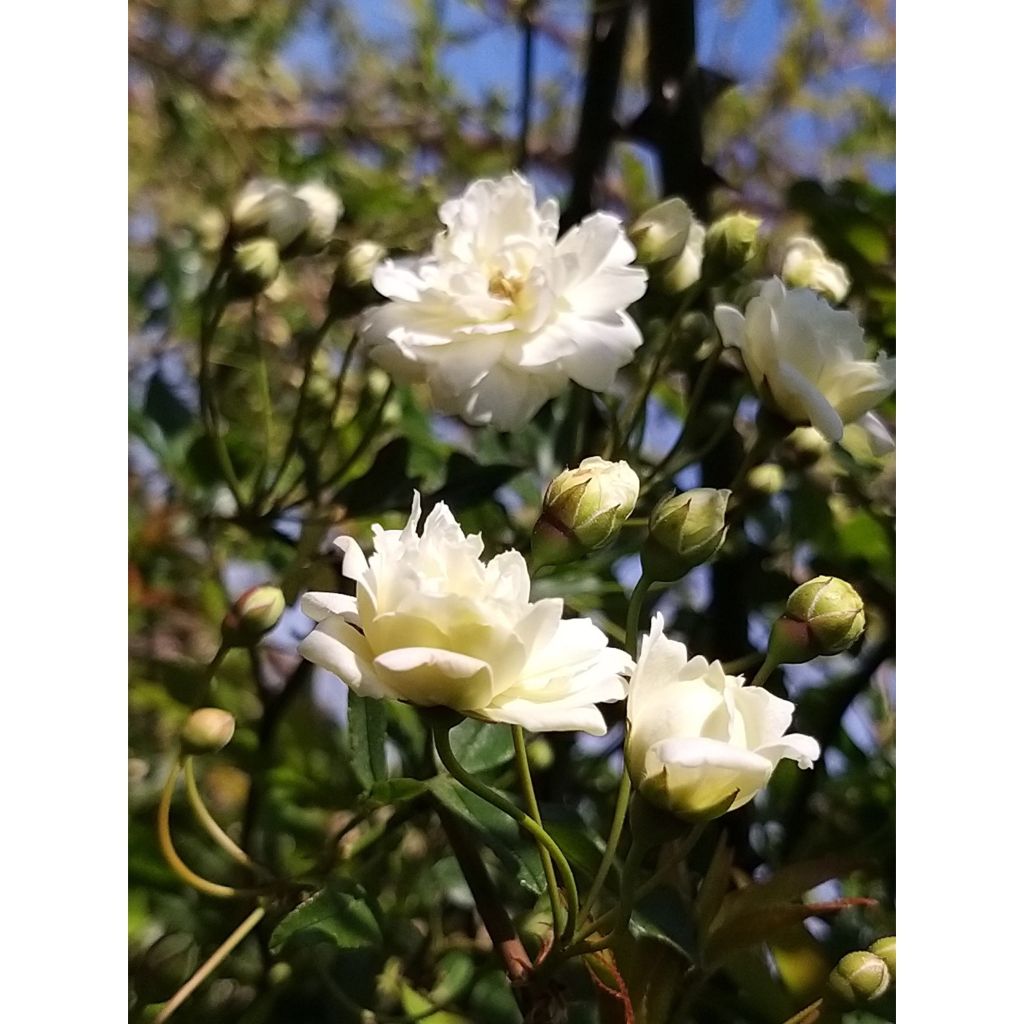

Rosa banksiae var. banksiae 'Alba Plena' - Hybrid Banksia - Rambling Rose
Rosa banksiae var. banksiae 'Alba Plena' - Hybrid Banksia - Rambling Rose
Rosa banksiae var. banksiae Alba Plena
Banksian Rose, Lady Banks' Rose, Hybrid Banksia
This item cannot be shipped to the selected country
Delivery charge from €5.90
Oversize package delivery charge from €6.90
Delivery charge from €5.90
Delivery to Corse prohibited
More information
Schedule delivery date,
and select date in basket
This plant carries a 6 months recovery warranty
More information
We guarantee the quality of our plants for a full growing cycle, and will replace at our expense any plant that fails to recover under normal climatic and planting conditions.
From €5.90 for pickup delivery and €6.90 for home delivery
Express home delivery from €8.90.
Oversize package: home delivery by special carrier from €6.90 per order..
Express home delivery from €8.90.
From €5.90 for pickup delivery and €6.90 for home delivery
Express home delivery from €8.90.
Delivery to Corse prohibited: UE law prohibits the import of this plant from mainland France to Corse as part of the fight against Xylella fastidiosa. Please accept our sincere apologies.
More information
Does this plant fit my garden?
Set up your Plantfit profile →
Description
The 'Alba Plena' Banksia Rose is a variety of the Lady Banksia Rose with small, double, cream-white flowers that are pleasantly scented. This vigorous liana has few thorns and only blooms once, in May, in such abundance that its bouquets sometimes hide its lush vegetation, woven with small, bright green, shiny and particularly healthy leaves. Like its brother 'Lutea', this rose is the pride of Mediterranean-style gardens and requires warmth and sunlight to thrive fully. It enjoys invading trees and creeping into hedges, where it expresses its formidable conquering vigour.
The Rosa banksia, also known as the May Rose, is a botanical species native to dry and mountainous subtropical regions in central and western China, at altitudes ranging from 500 to 2200 metres (1640 to 7218 feet). Therefore, this vigorous climbing rose appreciates warm climates, even those dry in summer. Its species name, banksiae, is dedicated to Lady Banks, wife of the famous botanist Sir Joseph Banks, who brought it back from his expeditions in China, along with new chrysanthemums and many other plants still unknown in Europe. There are only two subspecies of this rose and very few hybrids, as the plant is quite resistant to cross-breeding. The banksia var. banksia rose, which bears semi-double to double, non-scented flowers without stamens, has been cultivated for centuries in Chinese gardens. Its 'Albo Plena' form offers the advantage of a highly fragrant flowering.
The Banksia rose is a climbing plant that grows quickly, especially in mild climates. An aged plant can grow over 12 meters (39 feet) high and its base can occupy 6 metres (20 feet) on the ground. The young, flexible stems grow quickly after flowering and can reach over 3 to 4 metres (10 to 13 feet) in a season. If left unchecked, the Banksia rose will display a monumental fountain-like shape.
The Banksia rose produces countless bouquets of small, double, cream-white pompon-shaped flowers on 1-year-old branches. It starts flowering in April in highly protected areas and in May or June in warmer climates. Its foliage is evergreen to semi-evergreen, with three narrow and short leaflets that are bright and shiny green. However, the plant is sometimes prone to mildew when conditions are very hot and dry, but its robust health enables it to get rid of this disease on its own. The young leaves of the Banksia rose have a slightly coppery hue.
To support its long and flexible stems, the Banksia rose needs a sheltered support that is protected from cold winds. The smooth bark of the plant gradually transforms into rough strips revealing orange-ochre undersides as the plant ages.
This rose thrives in mild climates sheltered from violent winds that can dry out its flower buds. A real boon for dry gardens and mediocre soils, even slightly chalky ones, its extraordinary vegetation conquers trees and metamorphoses and elegantly dresses a trellis or a large wall from January to December. In hotter gardens, it will provide perfect shade on a large south-facing arbour. Easy to maintain, the plant requires no watering or treatments once well established. While it is incredibly frugal and sober, it should benefit from the shelter of a wall outside the olive tree zone and maximum sunlight to induce its fabulous flowering. The 'Alba Plena' Banksia Rose can be paired with a summer-flowering clematis or a blue passionflower to have a blooming wall all summer. It can also be paired with an evergreen ceanothus, all blue in spring, a Syringa microphylla Superba or a Rosa chinensis mutabilis with multicoloured blooms.
Report an error about the product description
Rosa banksiae var. banksiae 'Alba Plena' - Hybrid Banksia - Rambling Rose in pictures
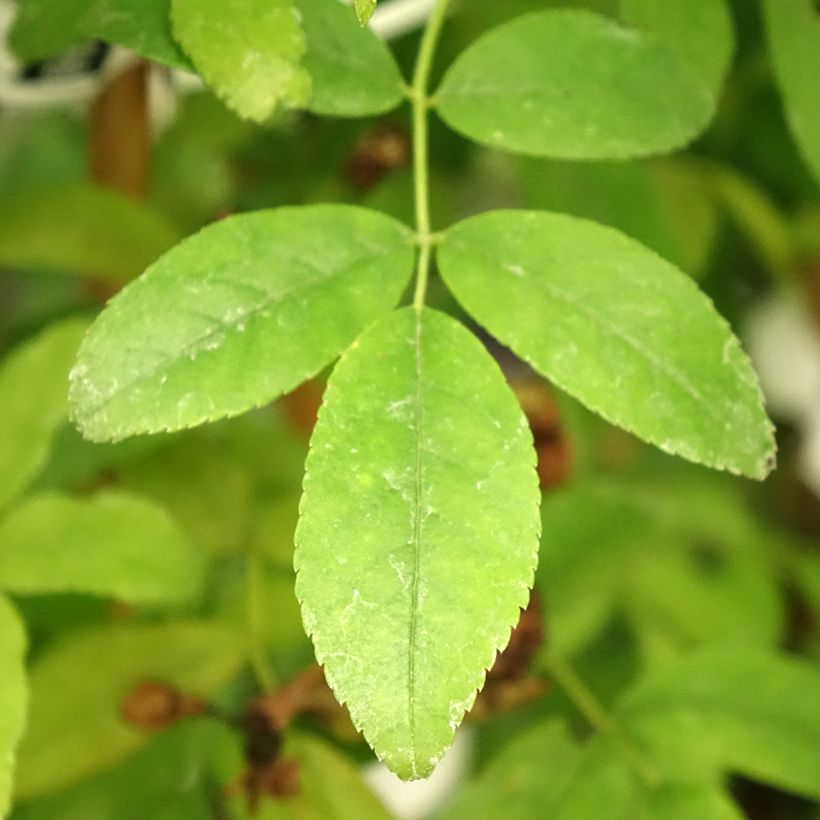

Plant habit
Flowering
Foliage
Botanical data
Rosa
banksiae var. banksiae
Alba Plena
Rosaceae
Banksian Rose, Lady Banks' Rose, Hybrid Banksia
China
Other Rambling Roses
Planting and care
The Banksia Rose 'Alba Plena' is a plant that grows best in mild, warm, and dry climates, but it can also do well in cooler areas if planted in a sunny spot protected from cold winds. The plant doesn't need special soil but the soil should be deep enough to accommodate its roots, which look for moisture deep down during dry summers. It tolerates limestone in the soil and prefers fertile, well-drained soil.
This rose blooms on 1 to 2-year-old branches. Prune it just after flowering to control its growth, and remove some older branches to rejuvenate it. Tie and bend branches that can grow up to 1m (3ft) a week during summer to achieve a prolific flowering. The plant needs plenty of sunlight to produce its magnificent flowers.
The Banksia rose is hardy in well-drained soil around -8/-10°C (17.6/14°F) if it's already a few years old. Protect young plants with winter protection fabric during the first 2 or 3 years in climates that regularly experience severe frosts. The foliage may develop white spots, which is mildew. This disease appears in hot and dry conditions but usually disappears quickly when conditions become more favourable.
Ants often walk on the young stems, but they do not harm the health of the plant. To propagate, take cuttings from the young shoots in the summer, as they root most easily. Cuttings from stems yield more irregular results.
Roses may develop unsightly spots at the end of summer, but this is a natural occurrence and doesn't harm the rose's growth.
Planting period
Intended location
Care
-
, onOrder confirmed
Reply from on Promesse de fleurs
Traditional Roses
Haven't found what you were looking for?
Hardiness is the lowest winter temperature a plant can endure without suffering serious damage or even dying. However, hardiness is affected by location (a sheltered area, such as a patio), protection (winter cover) and soil type (hardiness is improved by well-drained soil).

Photo Sharing Terms & Conditions
In order to encourage gardeners to interact and share their experiences, Promesse de fleurs offers various media enabling content to be uploaded onto its Site - in particular via the ‘Photo sharing’ module.
The User agrees to refrain from:
- Posting any content that is illegal, prejudicial, insulting, racist, inciteful to hatred, revisionist, contrary to public decency, that infringes on privacy or on the privacy rights of third parties, in particular the publicity rights of persons and goods, intellectual property rights, or the right to privacy.
- Submitting content on behalf of a third party;
- Impersonate the identity of a third party and/or publish any personal information about a third party;
In general, the User undertakes to refrain from any unethical behaviour.
All Content (in particular text, comments, files, images, photos, videos, creative works, etc.), which may be subject to property or intellectual property rights, image or other private rights, shall remain the property of the User, subject to the limited rights granted by the terms of the licence granted by Promesse de fleurs as stated below. Users are at liberty to publish or not to publish such Content on the Site, notably via the ‘Photo Sharing’ facility, and accept that this Content shall be made public and freely accessible, notably on the Internet.
Users further acknowledge, undertake to have ,and guarantee that they hold all necessary rights and permissions to publish such material on the Site, in particular with regard to the legislation in force pertaining to any privacy, property, intellectual property, image, or contractual rights, or rights of any other nature. By publishing such Content on the Site, Users acknowledge accepting full liability as publishers of the Content within the meaning of the law, and grant Promesse de fleurs, free of charge, an inclusive, worldwide licence for the said Content for the entire duration of its publication, including all reproduction, representation, up/downloading, displaying, performing, transmission, and storage rights.
Users also grant permission for their name to be linked to the Content and accept that this link may not always be made available.
By engaging in posting material, Users consent to their Content becoming automatically accessible on the Internet, in particular on other sites and/or blogs and/or web pages of the Promesse de fleurs site, including in particular social pages and the Promesse de fleurs catalogue.
Users may secure the removal of entrusted content free of charge by issuing a simple request via our contact form.
The flowering period indicated on our website applies to countries and regions located in USDA zone 8 (France, the United Kingdom, Ireland, the Netherlands, etc.)
It will vary according to where you live:
- In zones 9 to 10 (Italy, Spain, Greece, etc.), flowering will occur about 2 to 4 weeks earlier.
- In zones 6 to 7 (Germany, Poland, Slovenia, and lower mountainous regions), flowering will be delayed by 2 to 3 weeks.
- In zone 5 (Central Europe, Scandinavia), blooming will be delayed by 3 to 5 weeks.
In temperate climates, pruning of spring-flowering shrubs (forsythia, spireas, etc.) should be done just after flowering.
Pruning of summer-flowering shrubs (Indian Lilac, Perovskia, etc.) can be done in winter or spring.
In cold regions as well as with frost-sensitive plants, avoid pruning too early when severe frosts may still occur.
The planting period indicated on our website applies to countries and regions located in USDA zone 8 (France, United Kingdom, Ireland, Netherlands).
It will vary according to where you live:
- In Mediterranean zones (Marseille, Madrid, Milan, etc.), autumn and winter are the best planting periods.
- In continental zones (Strasbourg, Munich, Vienna, etc.), delay planting by 2 to 3 weeks in spring and bring it forward by 2 to 4 weeks in autumn.
- In mountainous regions (the Alps, Pyrenees, Carpathians, etc.), it is best to plant in late spring (May-June) or late summer (August-September).
The harvesting period indicated on our website applies to countries and regions in USDA zone 8 (France, England, Ireland, the Netherlands).
In colder areas (Scandinavia, Poland, Austria...) fruit and vegetable harvests are likely to be delayed by 3-4 weeks.
In warmer areas (Italy, Spain, Greece, etc.), harvesting will probably take place earlier, depending on weather conditions.
The sowing periods indicated on our website apply to countries and regions within USDA Zone 8 (France, UK, Ireland, Netherlands).
In colder areas (Scandinavia, Poland, Austria...), delay any outdoor sowing by 3-4 weeks, or sow under glass.
In warmer climes (Italy, Spain, Greece, etc.), bring outdoor sowing forward by a few weeks.


































